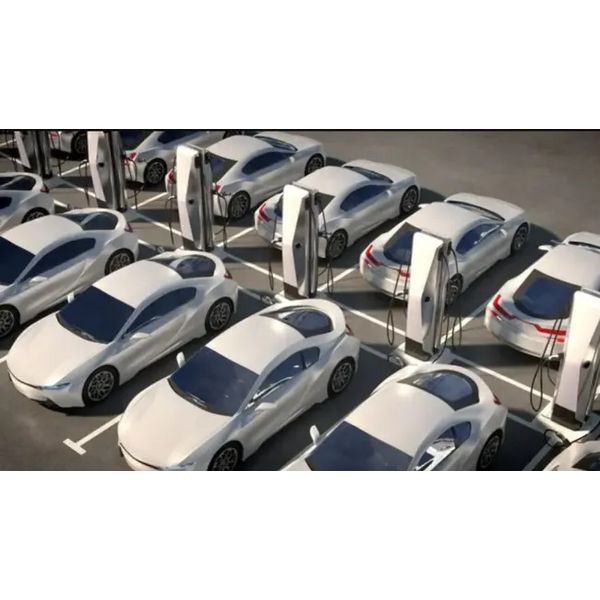

- Home
- Companies
- Energy Central
- Articles
- Rise of EVs increases DER management ...
Rise of EVs increases DER management urgency for utilities - Case Study
Proactive utilities are working on solutions now – because the rise of EVs does seem inevitable. To read more about how WEL Networks is tackling the issue, download the WEL Networks DERMS pilot case study.
It’s a fact. Electric vehicle (EV) sales are surging. According to the IEA’s Global EV Outlook 2023,
- EV sales exceeded 10 million in 2022 and are expected to reach 14 million in 2023
- A total of 14% of all new cars sold were electric in 2022, up from around 9% in 2021 and less than 5% in 2020.
Three markets dominated global sales:
- China
- Europe
- United States – sales increased 55% in 2022, reaching a global sales share of 8%.
While policymakers and advocacy groups align on the best way to support this growth through equity initiatives and charging infrastructure projects, utilities worldwide are faced with urgent near-term challenges to ensure the power grid can handle the uptick in EV volume.

For utilities, addressing the power charging or demand need is only one part of the puzzle. Ensuring the distribution system or network of electricity delivery infrastructure is adequate is a whole other challenge. An increase in power generally dictates a need for increased capacity—more transmission wires and all the equipment that keeps it safe and steady. Such power infrastructure projects take time, which is in short supply given the accelerated EV sales projections.
This was exactly the kind of urgency spurring New Zealand utility WEL Networks to consider non-wires alternatives that could be implemented almost immediately. New housing developments combined with a local appetite for environmentalism and sustainable living led to a surge in EV ownership in the small resort town of Raglan. Originally, peak demand projections for the local substation showed modest growth through 2063, which gave the utility ample time to prepare for upgrades. However, those projections didn’t take into account an unexpected growth of EV ownership in the region, and when the projections were re-cast with EV data, the substation was predicted to exceed safety guidelines by 2028.
Yikes – that`s like tomorrow in utility time.
Realistically, it is unlikely that infrastructure upgrades would be approved, built, and ready in time to meet the 2028 projections. WEL Networks needed to think outside the box to meet the critical timeline for augmenting their power network safely and swiftly.
The good news is that the local population’s sustainability endorsements meant there was strong support for solar PV generation and battery storage among customers. WEL felt the demand side of the puzzle could be solved by adding these customer-owned distributed energy resources (DERs) to their power generation mix. The bad news is that their grid (like all grids) was designed for one-way power generation and delivery and by adding customer DERs, the utility would need to find a way to accommodate and manage two-way flow of power while maintaining a safe and resilient grid.
With time ticking, WEL Networks decided to start a series of phased pilots that will set them up for a power network that both embraces and leverages customer DERs. At the heart of this solution is software that manages customer DERs within the constraints of the existing power network. In the context of all that’s been digitized in the 21st century, using software as a key tool for monitoring and control doesn’t seem like a stretch. However, in the power industry, which has traditionally relied on mechanical and analog solutions, it’s a big deal.
The software, known as a distributed energy resource management system (DERMS) uses artificial intelligence to analyze weather and load forecasts, plot a course for energy production, and then uses network and DER device feedback to refine and course-correct as needed in real time. While it’s doing that, the DERMS also addresses safety concerns including managing voltages, reverse power flows, and thermal overloads.
Since this is new technology for utilities, WEL Networks is testing its efficacy through pilots that use data that simulates network conditions on the power grid alongside live customer DER data from solar PV, battery storage and EV charging units. The first pilot is complete and generated a wealth of positive outcomes that have greenlighted the next phase.
New Zealand and the seaside town of Raglan are not even close to the top three global EV markets mentioned in the outset. But the urgency to manage the influx of DERs is going to hit every utility in the near future. Adding to the challenge is the fact that the addition of EVs and DERs is largely invisible to utilities until after the fact. Once pockets of increased demand start popping up, utilities are forced into a reactive mode of refusing additional DER connections and using curtailments and other unpopular moves that cast them as the bad guy in the prosumer DER movement.
Proactive utilities are working on solutions now – because the rise of EVs does seem inevitable. To read more about how WEL Networks is tackling the issue, download the WEL Networks DERMS pilot case study.
